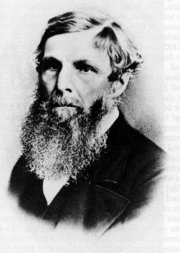German shipbuilding research institutes
Shipbuilding research institutes were established from 1872 to determine the propulsion power for ships by means of model tests . The first German shipbuilding research institutes were established around 1900 in Übigau , at that time still a suburb of Dresden , and in Bremerhaven .
The theory for model testing for ships was founded by William Froude (1810–1879). He began the first systematic towing tests with ship models around 1870 and set up a research institute in Torquay for this purpose in 1871/1872 . This method gave good results, and as a result, research institutes were set up in other countries.
1892 Übigau
In (Dresden-) Übigau , the first shipbuilding research institute in the German Reich was established in 1892 under the direction of the engineer Ewald Bellingrath (1838–1903) and the shipyard director Berthold Masing , and in close collaboration with professors from the TH Dresden . Encouraged by Hubert Engels , TH professor for hydraulic engineering, the "Institute for testing ship resistance and hydrometric instruments" was set up on the site of the shipyard in Übigau, which Bellingraths " Kettenschleppschiffahrt der Oberelbe " (KSO) took over and constantly expanded in 1878 . He achieved Bellingrath's goal of using model tests in the basin of this research institute to find a cheaper form of ship for inland waterway vessels on the German canal network.
1900 Bremerhaven, towing test station of the North German Lloyd (NDL)
Due to the lack of docking facilities, Norddeutsche Lloyd (NDL) decided in 1869 to build its own dry dock (double dock with a length of 121 m) with repair workshops in Bremerhaven. After the shipbuilding engineer Johann Schütte (1873–1940) had proven in 1899 that the express steamer Kaiser Friedrich, which had just been delivered , could not reach the contractually agreed speed, Lloyd commissioned him to set up a shipbuilding test institute. It was built on the west side of the New Harbor and was later demolished when moving to its current location.
1903 Research Institute for Hydraulic Engineering and Shipbuilding Berlin (VWS)
In 1901, Kaiser Wilhelm II ordered the construction of the Royal Research Institute for Hydraulic Engineering and Shipbuilding on what is now the Schleuseninsel in Berlin-Tiergarten , after he rejected the originally planned location on the edge of the imperial riding arena. The popular excursion destination was closed to visitors and the first attempts at towing were made here as early as 1903. In the basin u. a. Towing tests with ship models.
1906 Lichtenrade Marine Research Institute (near Berlin)
The naval construction officer H. Wellenkamp had developed another, simpler towing method and had a small towing tank built in the open air for testing purposes at the Kaiserliche Werft in Kiel . With the method named after Froude, the constant model speed is set and the resistance of the model is measured. Wellenkamp, on the other hand, set the resistance with a weight with which the model was being pulled and measured the speed as soon as it became constant. This principle enabled significantly shorter tow tanks that managed without a tow truck and could therefore be considerably wider. This eliminated annoying side edge effects.
Although the navy had the right to use VWS Berlin, the Reichsmarineamt opted for the Wellenkamp method. The Imperial Navy had at that time due to the fleet structure, a very extensive test program and needed a very large trial capacity. In 1906, a marine research institute was built in Lichtenrade near Berlin, which was operated according to the Wellenkamp method. Wellenkamp headed this institution, but died soon afterwards. His successor was naval construction officer O. Schlichting. In 1920 this institution had to be closed.
1913 Hamburg Shipbuilding Research Institute (HSVA)
The research institute for shipbuilding was established in Hamburg in 1913 after it became known that North German Lloyd would close its Bremerhaven facility. Ernst Foerster (born November 8, 1876 in Berlin; † May 13, 1955) was commissioned with the assistance of Blohm & Voss to found a new shipbuilding research institute in Hamburg. It was opened in 1915. Operations resumed after the Second World War in 1953. Today the shareholders are shipowners, shipyards, shipbuilding suppliers and Germanischer Lloyd .
literature
- Karl-Heinz Hochhaus: Simulation in ship technology . In: Hansa , Heft 5/2012, pp. 29-32, Schiffahrts-Verlag Hansa, Hamburg 2012, ISSN 0017-7504
- Sigbert Zesewitz, Helmut Düntzsch, Theodor Grötschel: Ewald Bellingrath - A life for shipping , Lauenburg Elbe Shipping Museum 2004
- J. Schütte: Investigations into stern ship shapes, especially about wave outlets, carried out in the towing test station of the North German Lloyd on models of the twin-screw express steamer Kaiser Wilhelm der Große , Yearbook of the Shipbuilding Society No. 2.
- H. Wellenkamp: A new model towing method , Yearbook of the Shipbuilding Society No. 9, Springer-Verlag, Berlin 1908
Individual evidence
- ↑ a b Ralf Schönball: Millions for the pink tube. In: Der Tagesspiegel . November 22, 2013, accessed December 5, 2013 .




